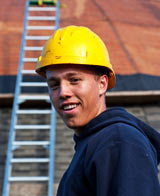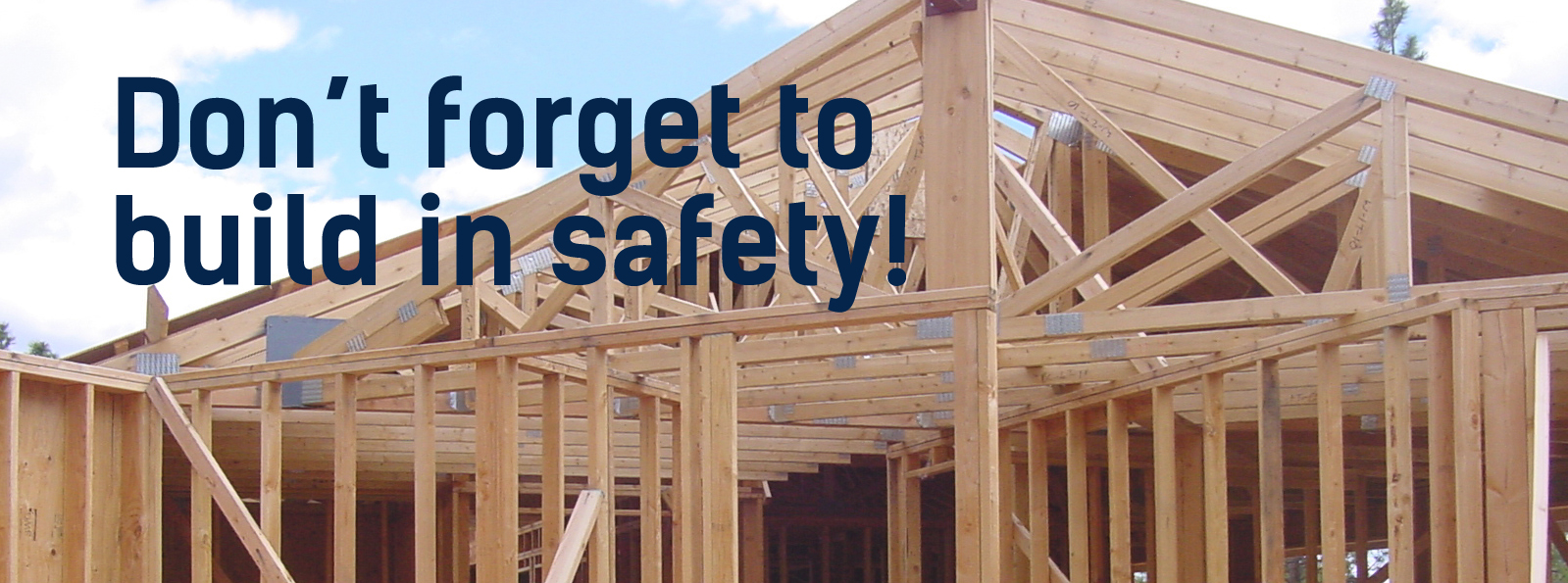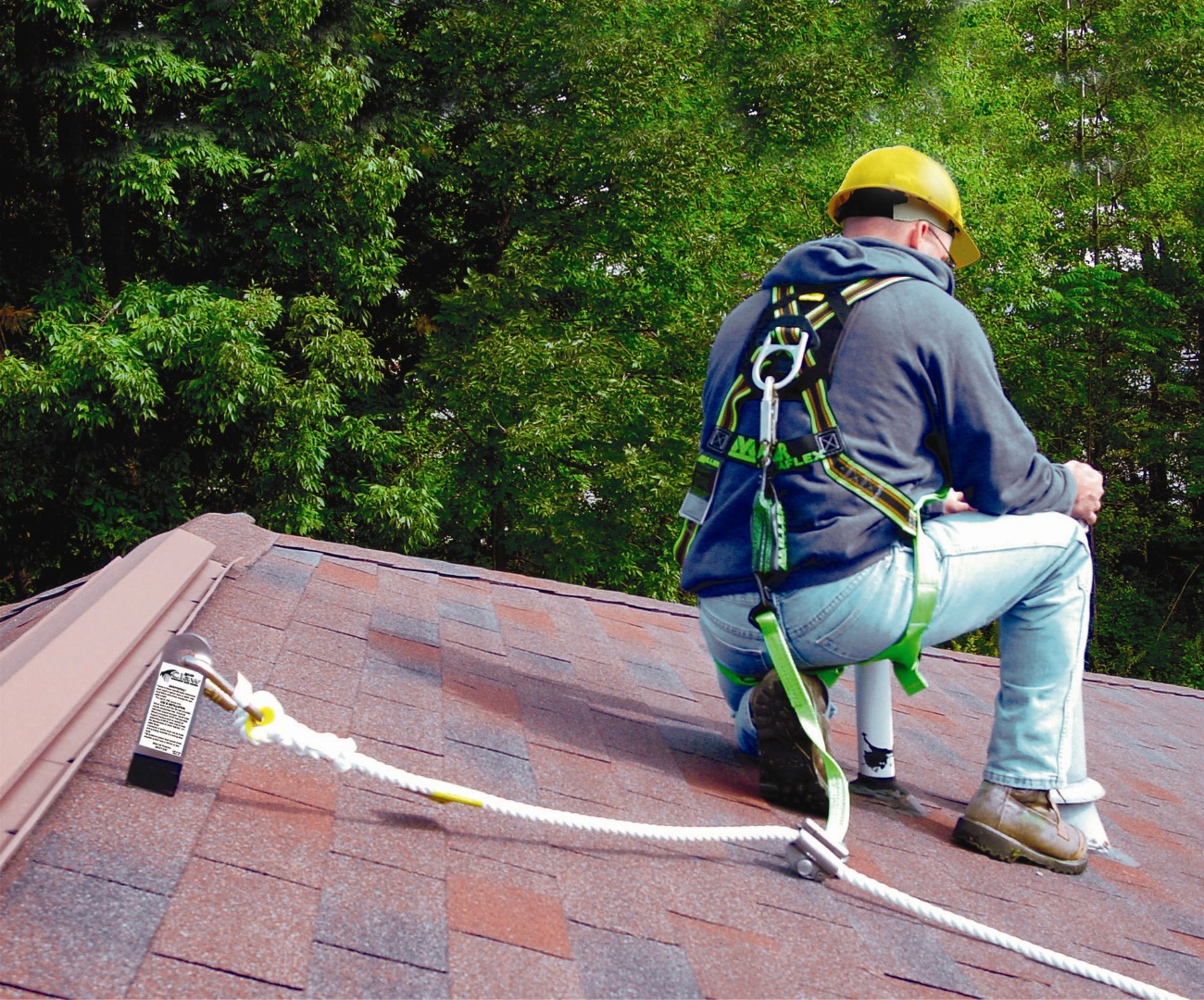


At WorkSafeNB, we know that falls continue to be a leading cause of serious workplace injuries in New Brunswick. As an employer, we know you care about your employees’ well-being…and so do we.
To help keep your workers safe, and to continue driving a safety-first culture in New Brunswick’s roofing industry, our health and safety officers will be visiting worksites this summer to ensure compliance with safety regulations. The blitz will focus primarily on:
• The use, care and maintenance of equipment;
• Supervisor competency; and
• Employee training
We've gathered all the information you need to ensure compliance with New Brunswick's fall protection legislation on this page. However, if you still have questions please call us at 1 800 999-9775.
Radio Ad
Checklist
Guidelines
Hazard Alerts
Pocket card
Poster
Safety talks


What constitutes “proof of coverage”? Should I expect to see a document of some kind?
Your contractor should have, or can easily get, a document from WorkSafeNB that states that they have compensation coverage. Your contractor can contact WorkSafeNB at 1 800 999-9775 or fax a request to 506 632-2819. NOTE: Only those contractors who regularly employ three or more workers are required to have workers’ compensation coverage. Smaller companies may apply for coverage, but it’s not mandatory.
If I ensure they are covered by workers’ compensation, is that the limit of my responsibility as a homeowner?
No. If you hire a contractor who employs workers on your site, the Occupational Health and Safety (OHS) Act applies to your home as a project site. Within your abilities, you should ensure the contractor and the contractor’s employees work safely.
When I hire someone with three or more employees, who is responsible for making sure the employees work safely, the contractor or me? If it’s me, how do I do that when I work full-time and it takes 3-6 months to build a house?
Remember, when the project is underway, your home may be considered a workplace under the OHS Act. This means that as the owner, if you have hired a contractor who employs one or more employees and if an injury occurs due to unsafe practices, it is possible that you could be charged and fined under this legislation. WorkSafeNB, however, considers that the primary responsibility for the employee’s health and safety lies with their own employer, the contractor. Your responsibility is to ask the contractor if they have workers’ compensation coverage and if they have a safety plan and safety training in place.
What can I do to protect myself from charges?
The OHS Act recognizes that, as the homeowner, you don’t have the same kind of expertise in workplace safety as the contractor you hire. As a homeowner, the best thing you can do is to take reasonable steps to ensure the contractor you hire knows what is required to do the job safely and has the required equipment. Ask specific questions related to your project. For example, if you hire a roofing contractor, ask them if they know the safety rules for roofing work and make it known that you want the rules followed. Ask if the employees have the appropriate training. These simple steps will go a long way to protecting you. You MUST notify employees or their supervisor about any specific hazards you know of. To continue with the roofing example, if your roof looks solid but you know there is a weak spot on it that won’t support a person until it is repaired, you must make that known. One of the most frequent violations of health and safety legislation occurs when people don’t wear fall protection equipment when working above a certain height. Any worker who works above three metres on a sloped roof MUST wear fall protection equipment.

What do I do if I see they’re not following safe practices do I call and report them?
You should bring this to the attention of the contractor. If they fail to correct the situation, you may contact WorkSafeNB and an officer will visit your site.
What do I do if they’re working unsafely and then they get pulled off the job how do I get my roof done? Do you have a listing of “safe” contractors, or do you know where I can get one?
Your best solution is to ask the contractor if they have a safety plan and if they follow the rules laid out in the OHS Act before you begin your project. In most cases, if you bring a safety concern forward, the contractor will correct the situation immediately. If that’s not the case, and a health and safety officer visits your site and finds your contractor in violation of safety rules, the officer may issue a Stop Work Order. You should know that if such an order is issued, your contractor would have to stop working on your site until they comply with the rules. Once they have complied with the officer’s satisfaction, they can resume working. As a final resort, if you have a contractor who refuses to follow the rules, you may want to start the contracting process over.
If my contractor has three or more employees, they are supposed to be covered under WorkSafeNB, which makes the contractor immune to lawsuit (no-fault insurance). Why doesn’t it also make me immune to lawsuit?
The Workers’ Compensation Act applies to workers and employers in recognized industries in the province. Being a homeowner is not a recognized industry under the Act so you are not eligible for coverage. The Act considers that as a homeowner, you likely have private insurance in place to protect you.
If my contractor has one or two employees, does it mean that we are both exposed to lawsuit?
It can mean that. If the contractor doesn’t have workers’ compensation coverage, both parties may be sued and the damages would be assessed against each party in terms of how much they were at fault. Hiring safety-conscious contractors and workers will not only help protect you from liability, it will also lessen the chance of incurring costly delays associated with any injuries.
Is all construction at my house subject to the OHS Act laws?
No. If you employ a single worker to do a job, your house is not considered a workplace. It only counts as a workplace if you employ a contractor who hires another worker.
What’s considered doing my “due diligence”?
Being duly diligent is a legal term that simply means that you’ve done something conscientiously and with reasonable care. Homeowners are not expected to have specialized knowledge, but you must act as a reasonable homeowner and make enquiries of the contractor so you are reasonably sure they know the rules and will follow them.
If the contractor won’t obtain these permits for me, how do I go about doing it?
When hiring a contractor, ask to see all required permits before starting any work. To know your responsibilities and the applicable rules, always contact your local municipality or district planning commission well in advance of any construction on any property. These offices are listed in your local phone book.
What do I do if the contractor does not appear to have safety measures in place? Where do I find out what safety measures they should have in place?
You are not expected to know all the safety laws. However, if you would like more information, please visit WorkSafeNB | Acts and Regulations to find links to the various Acts and Regulations.
Whom do I call to report an injury to WorkSafeNB?
Your contractor should inform WorkSafeNB of any serious injuries.
Am I responsible for providing first aid, or a first aid kit, or is my contractor responsible for that?
As the employer, the contractor is responsible for complying with the first aid requirements. You should ask the contractor if they are in compliance.
New Brunswick’s Occupational Health and Safety Act and regulations contain legal requirements that must be met by all New Brunswick workplaces. Many sections of the legislation have associated guidelines and publications to help workplaces meet these requirements.
This OHS Guide presents key topics to assist you – New Brunswick’s employers and employees – in understanding your legislative obligations within your workplaces. This guide provides information on topics in a summarized format – users should always refer back to the legislation or regulation for specific requirements.
We welcome your feedback. Please direct any comments or questions about this guide or its content to the Compliance and Regulatory Review department at guide@ws-ts.nb.ca.
For additional information on fall protection, please visit the following websites:
Changes to legislation
Updates to fall protection legislation came into effect January 1, 2011. Designed to keep employees working at heights safe, the amendments are the result of several years of research, analysis, consultation and evaluation by WorkSafeNB and industry stakeholders.